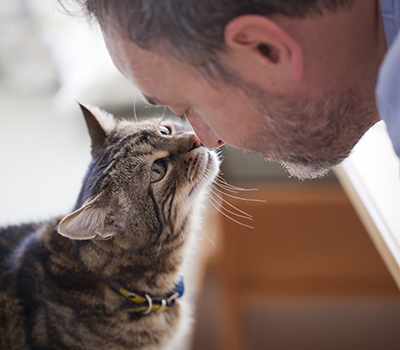In medicine, we seek treatments to our ailments. Find a cure and fix the problem. Compassion fatigue is a real condition that affects millions of caregivers around the world. While complex, there are simple things that can be done to combat it. Does performing euthanasia, maybe lots of euthanasia through the course of the week/month/year lead our compassionate veterinary team members to be overwhelmed with compassion fatigue? When approached properly, my answer will be a resounding no. And I believe the right mindset and utilization of proper euthanasia techniques will actually reduce the risk.

Compassion fatigue is a combination of two main components; Secondary Traumatic Stress (STS) and Burnout. Secondary Traumatic Stress (STS) happens to us when we witness the Primary Traumatic Stress of another being, be it human or animal. It’s internalized through this witnessing, often over and over again through the course of our lives until we become symptomatic. We know we have experienced STS when what we’ve witnessed wants to replay over and over again in our minds, usually unwelcomed wherein our thoughts are hijacked back to the event. What’s particularly interesting to me is the fact that in order to internalize STS, we ourselves must be in a physical state of arousal. Our body is amped up with driving sympathetic tone, opposite from the relaxed parasympathetic tone. Veterinary teams in the thick of the work day, running around from patient to patient are working off their sympathetic energy and are therefore at an increased risk of STS when watching pain, suffering, fear, anger, and a myriad of other ‘threatening’ situations from clients and pet patients. If you’re amped up, you are at risk. If you are calm, your risk of STS drops dramatically.
Burnout is a feeling of dissatisfaction or unworthiness within the workplace. It begins to creep in over time when an employee is feeling the demands of the job outweigh the resources. Burnout is combated by engaging employees in interesting and useful responsibilities. Employers should always be matching up a staff member’s personality and core strengths with the job. Those validated in their daily roles are generally free of burnout. Delivering a good death experience is considered by most to be fulfilling.
So where euthanasia comes in to combat compassion fatigue is rather eloquent. A good euthanasia experience is defined by low stress. When done properly, especially when following CAETA recommendations, the appointment is calm, quiet, controlled. The room, while laiden with sad emotions, can be a soothing balm to the busy day. Veterinary team members are welcome to settle in and have tender, meaningful conversations with families. They are allowed to sit still for 30 minutes or more and witness the human-animal bond in action. During the appointment, one’s sympathetic tone should shift to parasympathetic. Many years ago, I heard a mobile euthanasia veterinarian address a room of like-minded professionals and say that those of us performing up to 10 euthanasias a day should be riddled with compassion fatigue. Yet, she pointed out, we were not. The point she was making was that we were all performing euthanasia the right way, for the right reasons, and felt good about our work. To take it a step further, because home euthanasia work tends to be at a much slower and less frenzied, the stage is set for reduced STS.
Utilizing euthanasia to reduce compassion fatigue starts with inviting overextended veterinary team members to either sit in on, or themselves perform, a gentle euthanasia.
Tips to reduce sympathetic tone and subsequent STS
- Take deep breaths before entering the room
- Relax your pelvic muscles; release bodily tension
- Engage with the client and pet with slow soothing movements and a mellow voice
- Listen to stories. It’s ok to laugh and have light moments when appropriate
- Take many deep sighs to dial back anxiety, for everyone’s benefit
- Provide soothing music and scents when appropriate
Tips to reduce burnout during euthanasia
- Recognize that euthanasia is the best course of action given the circumstances
- Support the client with whatever they need
- Learn the best approach to techniques and feel prepared for any challenge that may present
- Perform a technically strong euthanasia
This last one is key. Understanding how to deliver a perfect euthanasia experience is necessary for success. It defeats the purpose to create a safe, serene space just to muddy it up with a stressful death. Harnessing the power of proper sedatives and techniques keeps the appointment dial set at ideal. Of course, the veterinary team has to embrace the decision to euthanize. Having reservations about the act will increase the prospect of compassion fatigue.
Strange as it might sound, the euthanasia room should feel like a spa; a place everyone wants to escape to in a hectic day. I’m not advocating to increase euthanasia appointment numbers so staff can have a reason to chill out, but I am suggesting when they do happen, they are embraced for the tranquility they possess. Change the way you look at things, and the things you look at change.

